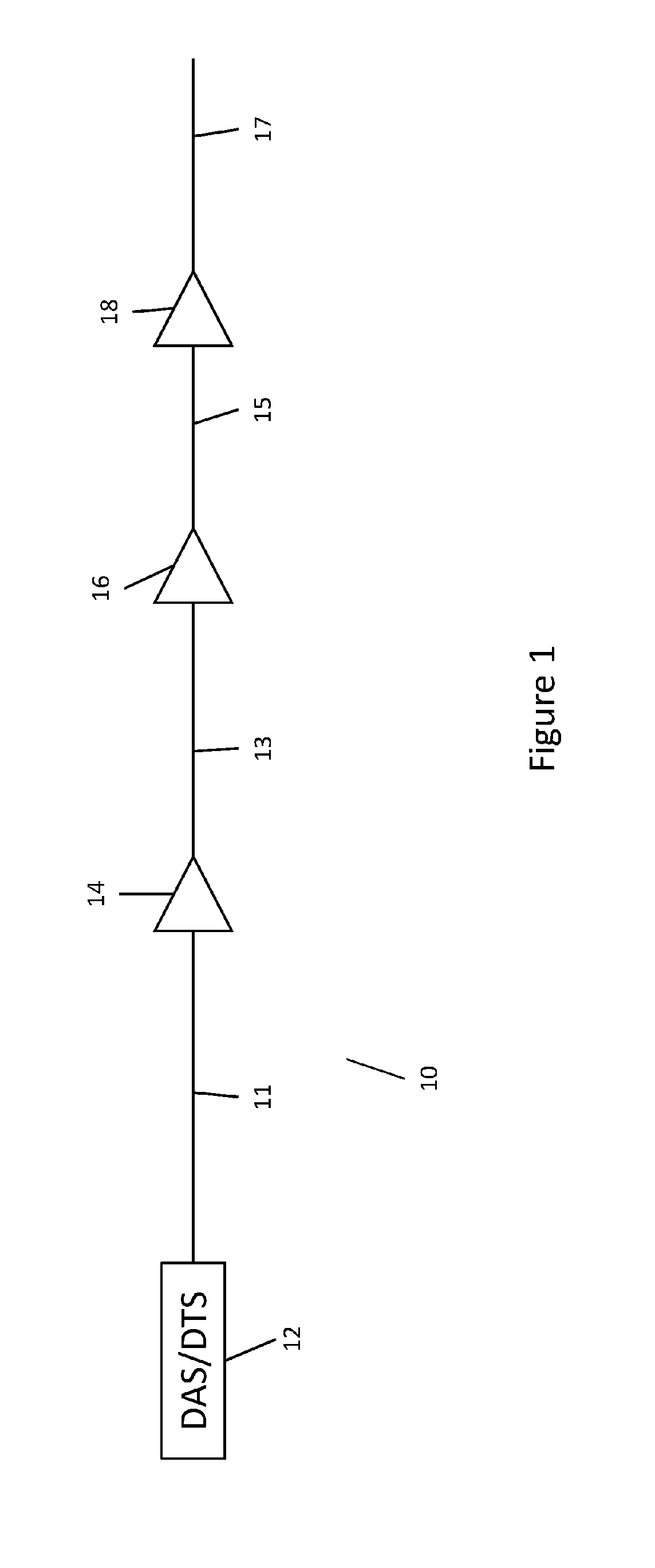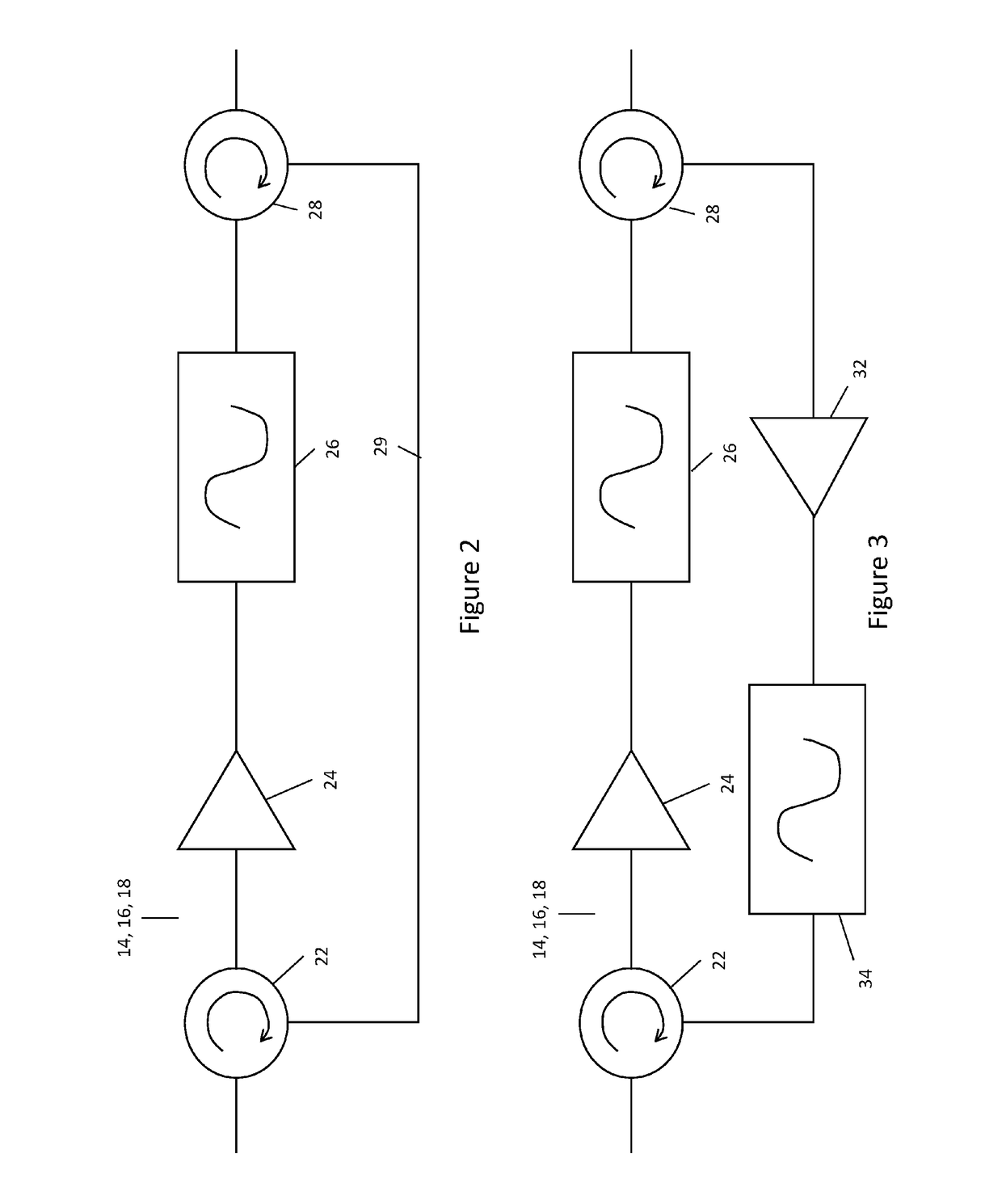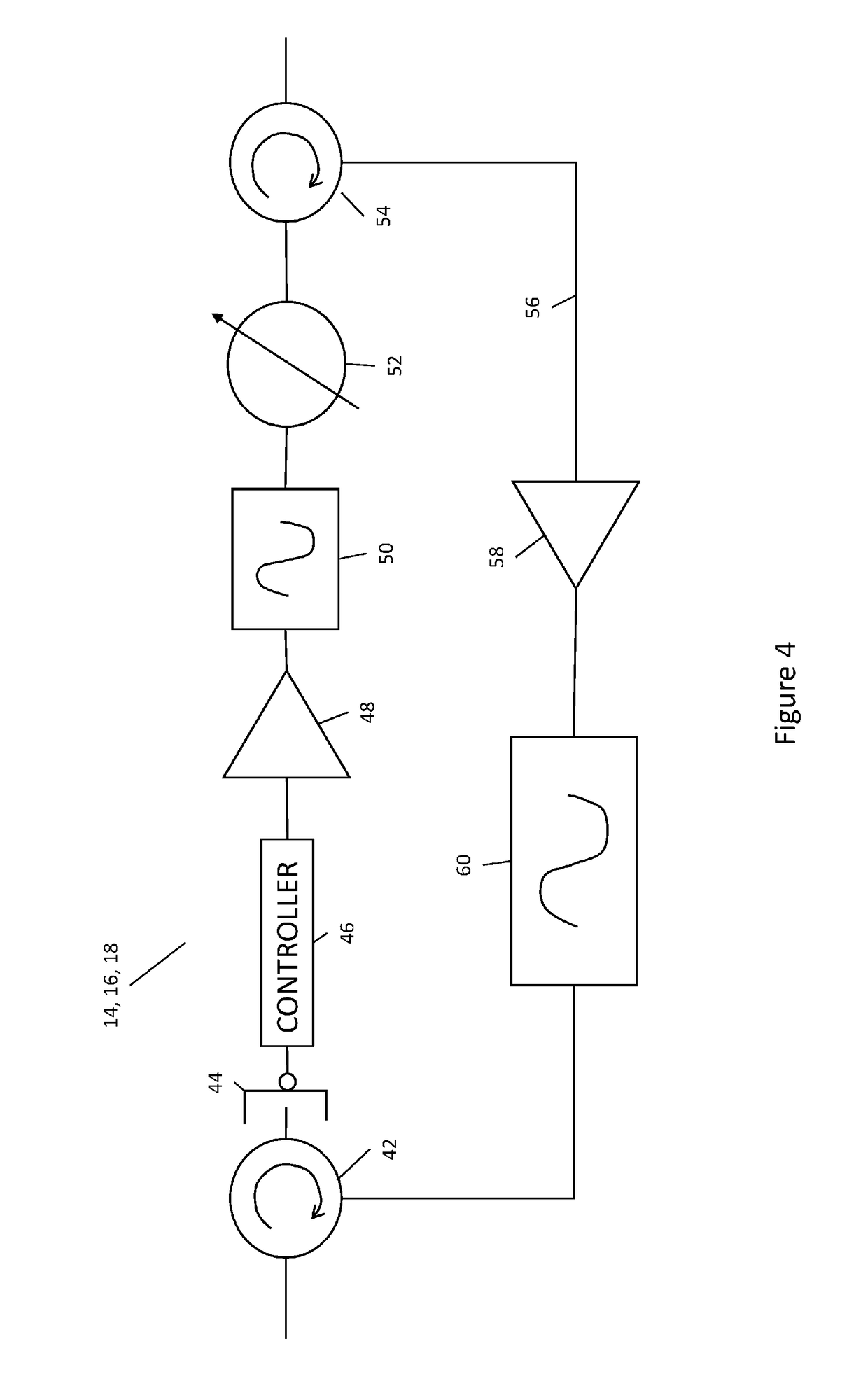Range extension for optical fiber sensing systems
a technology of optical fiber and sensing pulses, applied in the field of optical fiber sensing systems, can solve the problems of increasing the system deployment cost, the range of most optical fiber das and dts systems is limited to around 5 km, etc., and achieves the effects of increasing the range, increasing the power of any sensing pulse, and increasing the power of backscatter
- Summary
- Abstract
- Description
- Claims
- Application Information
AI Technical Summary
Benefits of technology
Problems solved by technology
Method used
Image
Examples
first embodiment
[0026]FIG. 2 illustrates the optical amplifier modules 14, 16, or 18. In the forward path the amplifier module 14, 16, 18 comprises a first circulator 22, which is a three port device where a signal input at a first port is output at a second port, whereas a signal input at the second port is output at the third port. Correspondingly, a signal input at the third port is output at the first port. Optical circulators are of course known in the art, and no further description of the internal operation thereof will be undertaken. The first port of the optical circulator 22 receives is connected to the optical fiber 11, 13, or 15 of the preceding fiber length, whereas the second port of the optical circulator is connected via an optical fiber to the input of an optical amplifier 24, such as an optical fiber amplifier like an erbium doped fiber 8mplifier (EDFA). The optical amplifier 24 acts to amplify the power of the incoming pulses received from the optical circulator, and then feeds t...
third embodiment
[0031]One advantage of the arrangement of the third embodiment is that the forward pulse is effectively regenerated for each subsequent length of sensing fiber. Not only does this provide for improved pulse quality along any particular length of sensing fiber, but it also allows for different wave lengths of pulse to be used for the different lengths of sensing fiber. For example, therefore, a different wavelength of forward pulse could be used for sensing fiber 11 compared to sensing fiber 13, as well as for sensing fiber length 15, and for sensing fiber length 17. This helps with signal discrimination in the sensor source apparatus, as the backscatter and / or reflections from a particular length of sensing fiber will be of the same wavelength as the forward pulse on that sensing fiber. Hence, effectively, in this embodiment up to four different wavelengths of backscatter and / or reflections will propagate back down the fiber, and which can then be detected at the sensor source appar...
PUM
 Login to View More
Login to View More Abstract
Description
Claims
Application Information
 Login to View More
Login to View More - R&D
- Intellectual Property
- Life Sciences
- Materials
- Tech Scout
- Unparalleled Data Quality
- Higher Quality Content
- 60% Fewer Hallucinations
Browse by: Latest US Patents, China's latest patents, Technical Efficacy Thesaurus, Application Domain, Technology Topic, Popular Technical Reports.
© 2025 PatSnap. All rights reserved.Legal|Privacy policy|Modern Slavery Act Transparency Statement|Sitemap|About US| Contact US: help@patsnap.com



